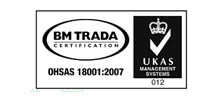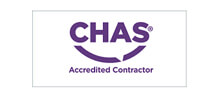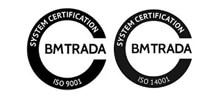It’s safe to say the aim at the outset of any project is the completion of a build on time and on budget. But most industry professionals will have experience of a construction project that has encountered problems – unforeseen issues that cause delays, extra cost, or breakdown of client relationships. Services such as design of adoptable pump stations to private pump stations are a fundamental working part of any build and they needn’t be one of these problems. The key to a straightforward pump station design and installation? Involve the experts from the beginning.
Get it right from the start
Even at conceptual stage, before drawings are completed and a build has begun, answering key questions about Sewerage Sector Guidance (the replacement of SFA – Sewers for Adoption) or private pump stations can save future headaches. What size of pump station will be required for the planned build? How much space will this take up on site? Where on site will it be most efficient to place it? What will the specific requirements of the local water authority be? By directing these questions to your pump station designer as early as possible, all requirements are understood from the outset and designs can include optimal rather than substandard solutions, avoiding costly changes and corrections being made further down the line.
Every build is different, and pump station design should be considered as a bespoke solution for each specific project. Even between two similar projects (for example, two residential housing builds of roughly the same size), the specific requirements can vary. This might be something as simple as the size of space required for pumping facilities or unique limitations of a particular site. By relying on precedent or standard solutions from previous projects, groundworks crews can end up being instructed to create spaces that don’t fit the ultimate need and responsibility for this mistake can find its way back to initial engineering or architectural planning.
The process of integrating pump stations of adoptable standard or other pumping facilities can be viewed as a life cycle, from initial assessment through design, approval, installation and management, and subsequently adoption of the station by the local water authority. Understanding this process from the start and being clear on which parties are responsible for each stage is crucial for a successful integration. This is where involving a provider who can cover the whole life cycle can be helpful – the fewer stakeholders there are to be coordinated, the more chance there is of a streamlined process.
Keep the process simple
Issues do occur, that’s the reality of any project. But when they do, you want to be able to deal with them quickly and efficiently. Adopting one company for all aspects of the whole life cycle of your build means that unforeseen issues can be addressed easily without having to wait for communication between multiple parties. Problems can be assessed and immediately passed over to the relevant person in-house. Parts can be accessed quickly and repairs made without delay, saving both time and money.
A simple, but carefully managed maintenance and snagging period after installation can also help to eliminate any problems that could delay the adoption process. By working with a single provider, they will have full knowledge of the design and installation phase, meaning any issues during maintenance and snagging can be easily checked against the original requirements and discussed without having to wait for information from another source.
Experience pays, and any adoptable pump station designer with a history of successful projects across multiple water authority areas will have the industry relationships necessary to ensure a smooth process. This would include good working relationships with local water authority inspectors, trusted partnerships with suppliers, and up-to-date knowledge of the most recent industry regulations. When handover occurs, the pump station can be transferred without difficulty and without any key requirements being overlooked.
Consider the long term
The end goal should always be to deliver on time and on budget to allow timely sale of properties and maintain good client relationships. Ensuring that the inclusion of Sewerage Sector Guidance and other pumping facilities doesn’t disrupt this goal comes down to keeping in mind the ultimate need – seamless and successful adoption of the pump station. This means being able to have faith in your provider to deliver all parts of the project to a high standard and being able to keep open lines of communication with a small number of expert individuals along the way. Keeping documentation flowing from one source throughout the adoption process means projects can be handed over without confusion, allowing everyone involved to maintain a reputation for quality and efficiency, keeping clients happy and laying the groundwork for future collaborations.












